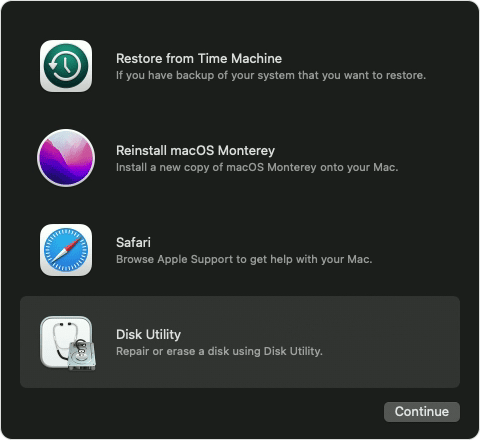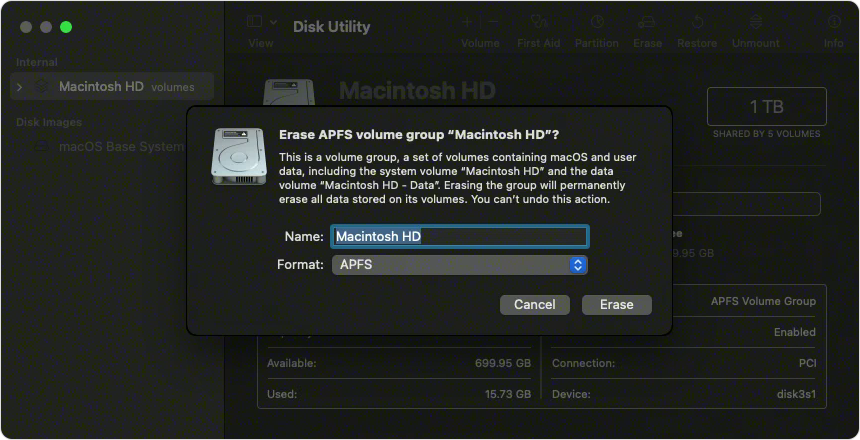How To Clean Startup Disk On Macbook 2017
Employ Disk Utility to erase an Intel-based Mac
How to erase (format) built-in startup disk of an Intel-based Mac.
Use Disk Utility to erase your Mac
- Start up from macOS Recovery: Turn on your Mac, and then immediately press and concord these two keys until you see an Apple tree logo or other image: Command (⌘) and R.
- If asked, select a user you know the countersign for, then enter their ambassador password.
- From the utilities window, select Disk Utility and click Go on.

- Select Macintosh HD in the sidebar of Disk Utility. Don't see Macintosh Hd?
- Click the Erase push button in the toolbar, so enter the requested details:
- Name: Macintosh Hard disk drive
- Format: APFS or Mac Os Extended (Journaled), equally recommended by Disk Utility
- Click Erase. However, if y'all see an Erase Volume Group button, click that push instead.

- If asked, enter your Apple ID. Forgot your Apple tree ID?
- After the erase is done, select any other internal volumes in the sidebar, then click the delete volume (–) button in the toolbar to delete that volume.
During this step, disregard any internal volume named Macintosh HD or Macintosh Hd - Data, equally well as any volumes in the External and Disk Images sections of the sidebar. - Quit Disk Utility to return to the utilities window.
- If you want to get-go upwardly over again from the deejay you erased, select Reinstall macOS in the utilities window, and then click Keep and follow the onscreen instructions to reinstall macOS.
If you don't see Macintosh Hard disk in Deejay Utility
Your congenital-in startup disk should exist the first item listed in the Disk Utility sidebar. It'southward named Macintosh Hard disk drive, unless y'all changed its name. If you don't see it there, choose Apple menu > Shut Down, then unplug all nonessential devices from your Mac and endeavour again.
If your deejay still doesn't announced in Deejay Utility, or Deejay Utility reports that the erase procedure failed, your Mac might need service. If y'all need assist, please contact Apple Support.
Published Date:
Source: https://support.apple.com/en-us/HT208496
Posted by: halfordputdow.blogspot.com


0 Response to "How To Clean Startup Disk On Macbook 2017"
Post a Comment